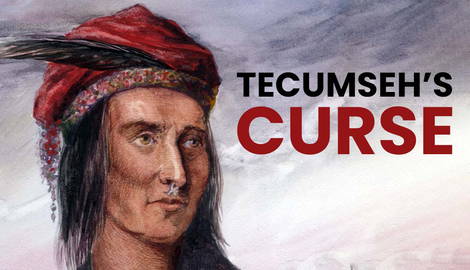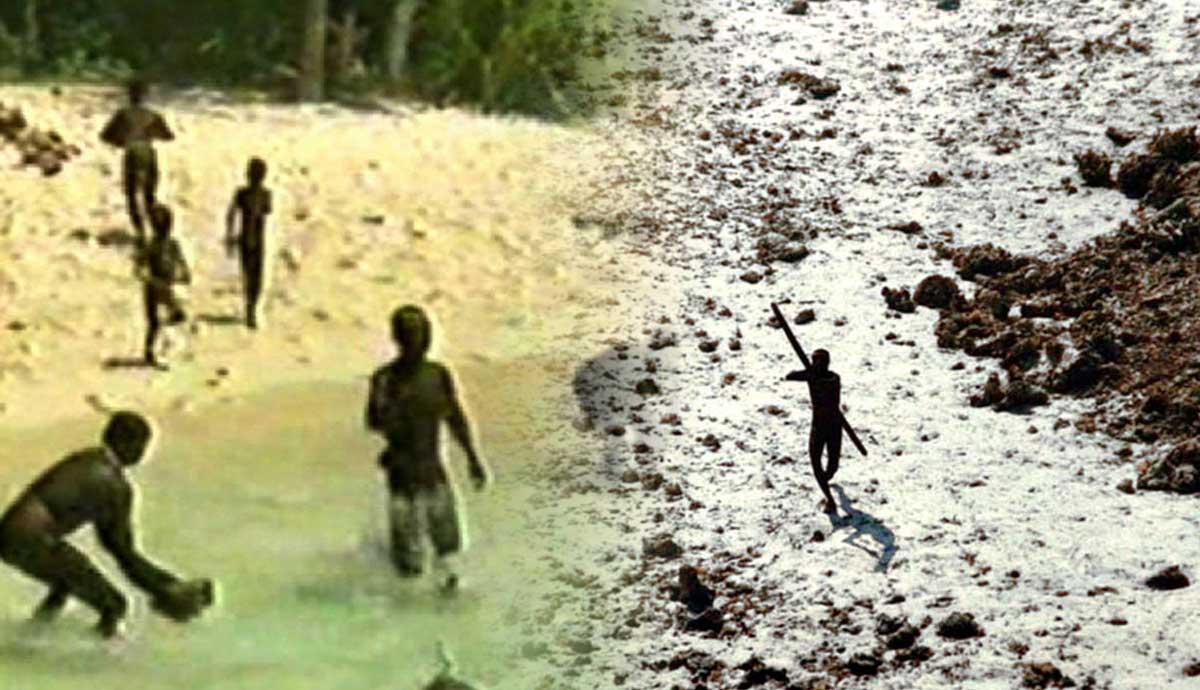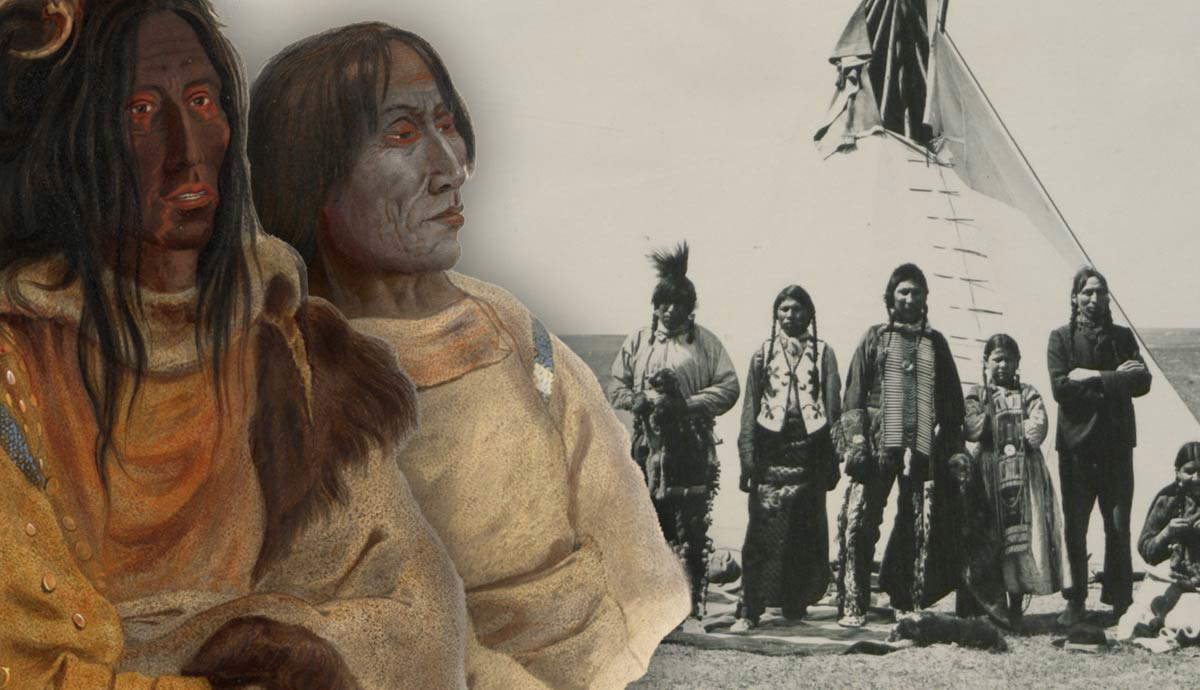
Tecumseh, the Shawnee leader of an instrumental Pan-Indian confederacy, stood up to the United States when his people and allies were threatened. He would be killed in the ensuing conflict, but with his death came rumors of a curse placed on the highest office in the land. Shockingly, the curse seems to have come true throughout America’s history. Is it a wild coincidence? Or is Tecumseh killing America’s presidents from beyond the grave?
Who Was Tecumseh?

Tecumseh was a Shawnee man born in the nineteenth century during a tumultuous time in US history. The young United States was attempting to move westward, encroaching on Indigenous homelands that had been in existence for centuries. Conflicts arose, and Tecumseh became a key player. He and his brother, Teskwatawa, known as the Prophet, worked together to create a united Native American force. Though they proved to be a formidable opponent, eventually the US forces would overcome the Shawnee and their allies. Tecumseh was killed in 1813 during the Battle of Moraviantown, part of the War of 1812. With his death, Tecumseh’s confederacy fell apart, and the control of the area, known as the Northwest Territory, went to the fledgling US government.
Tecumseh’s Curse: The Curse of Tippecanoe

Several years later, William Henry Harrison, who in Tecumseh’s time had been one of his contemporary military rivals, would die suddenly, and rumors began to swirl. Stories of a legend came to light, with oral histories indicating that Tecumseh and Tenskewatawa had cursed their enemies for eternity. Not only would Harrison suffer, but the “Great White Chief chosen every 20 years would die in office.” Conspiracy enthusiasts postulated that every president who followed Harrison, elected in a year ending in zero, would die during their term as a result of this curse. Adding to the curse’s validity is the evidence, a list of presidents who have died under these circumstances. Attention was brought to the string of deaths in 1931 in a Ripley’s Believe It Or Not publication, and the idea was only supported by future deaths that followed. More recent presidents seem to have finally bucked the jinx… or have they?
The Death of William Henry Harrison

William Henry Harrison was a son of Virginian elites, an ambitious man who worked his way up the ranks of the military and government. He became the governor of the brand-new Indiana Territory in 1801, and one of his main priorities was expansion, leading him to become an antagonist to Tecumseh and his legions. He was elected to the presidency in 1840 and slated to take office in March 1841 (presidential inauguration took place in March until 1937).
Harrison did ascend to his role, but his time in the presidency was short-lived. Harrison famously gave his inauguration speech outdoors in poor weather, without a coat or hat. Within days he had developed a cold. With the lack of medical knowledge that existed at the time, crude treatments such as bleeding were used to try and heal the president. However, his respiratory ailment escalated to pneumonia, which killed him exactly one month after his inauguration. Today, he is still the shortest-serving US president ever, and is considered the first victim of Tecumseh’s curse.
The Assassination of Abraham Lincoln

In one of the more famous events in US history, Abraham Lincoln was shot and killed by actor and Confederate sympathizer John Wilkes Booth on April 14, 1865. Lincoln led the country through the tumultuous American Civil War, and had succeeded in his attempt to preserve the Union. Under Lincoln, the Emancipation Proclamation was issued, one of the key steps in a long line of events that would prohibit slavery in the United States. Though Lincoln was serving his second term, re-elected in 1864, his first election had been in a year ending in zero—1860—aligning him with the curse.
Lincoln died nine hours after he was shot in the head, and Wilkes attempted to escape, along with other conspirators. The secretary of state, William Henry Seward, was threatened the same evening in a coordinated attack, but survived. It was believed that at least five people, including Booth and Seward’s attacker, Lewis Powell, were involved in the plot to kill Lincoln, Seward, and other key government officials, as a result of anger over the Civil War. All, including Booth, were caught and shot or hanged.
James Garfield Was Shot

Walking through the Baltimore and Potomac train station on July 2, 1881, President James Garfield, elected in 1880, was preparing to leave on a family vacation to the Jersey shore. Suddenly, a mentally ill lawyer named Charles Guiteau burst out of the crowd and shot the president twice. One of the shots penetrated through his spine and remained in his abdomen, where it would lodge and lead to his death.
Garfield would persist in life for two months. During that time, doctors attempted numerous archaic medical procedures, including unwashed hands probing the wound to remove the bullet and rudimentary surgical attempts. Garfield died as a result of infections that arose from his wound and subsequent treatment. On September 19, the president passed away after weeks of pain, weight loss, and suffering. Although Guiteau would become one of the first high-profile criminals to plead not guilty by reason of insanity, he was found guilty and hanged the following year.
William McKinley Was Killed by an Anarchist

Initially, it was believed that President William McKinley would survive the assassination attempt by Leon Czolgoz in September 1901. Czolgoz was a devout anarchist who believed the president represented the type of government overreach that he despised. Czolgoz shot McKinley as he was exiting the Pan American Exposition in Buffalo, New York, on September 6, 1901. The president was hit twice with the assassin’s revolver, and Czolgoz was immediately apprehended by two Secret Service agents and a bystander.
The still-conscious president urged his agents not to hurt the man as he was rushed away by ambulance. The wounds, though serious, did not seem life-threatening to McKinley’s doctors. However, little did they know infection had started to set in around the wounds. President McKinley passed away from gangrene on September 14th, just six months into his second term. Czolgoz died in the electric chair just over a month later, freely admitting to his crime.
Warren G. Harding Suffered a Sudden Demise

Warren Harding struggled with a bout of health issues not long before his death on August 2, 1923. However, the 29th president didn’t think a lot about his poor health, as he had recently traveled extensively, leaving him exhausted, and had long suffered a condition that left him with an enlarged heart. The stress of his presidency, rife with scandals such as Teapot Dome and numerous extramarital affairs, did nothing to improve his wellness.
Harding was sitting in his bedroom as his wife, Florence, read the newspaper to him. His last words were, “That’s good, go on,” in response to an article about himself, when he suddenly gave a shudder and dropped dead. He expired before doctors were even able to arrive, and his wife refused an autopsy. This would later lead to rumors that she had poisoned him. However, it was reported initially that Harding had passed from “a stroke of cerebral apoplexy,” though today, historians believe that he likely died from sudden myocardial infarction, or a heart attack.
The Cerebral Hemorrhage That Killed FDR

It was no public secret that Franklin Delano Roosevelt struggled with his health, including debilitating polio. Still, FDR seemed to beat every challenge thrown his way amid his own personal crises, from pulling the country through the Great Depression to managing the affairs of World War II. One place he retreated to to help bring levity to his life was Warm Springs, Georgia, where he created a polio treatment center and had a home known as “The Little White House.”
On April 12, 1945, Roosevelt was in Warm Springs, posing for a portrait and spending time with friends. He suddenly lost consciousness and never awoke, succumbing to a cerebral hemorrhage, also known as a hemorrhagic stroke. The president was succeeded by Harry S. Truman, who had only been vice president for a few months.
The Kennedy Killing

In perhaps the most dramatic death related to Tecumseh’s Curse in terms of the conspiracies and public discourse surrounding it, John F. Kennedy was assassinated in Dallas in 1963. Lee Harvey Oswald was accused of the killing but was murdered before he could face a judge and jury. Nightclub operator Jack Ruby shot Oswald as the suspect was being transported through the basement of Dallas Police Headquarters to an armored car intended to take him to jail.
Rumors still surround the Kennedy assassination over sixty years later, including whether or not the young president, who was dealing with such pressing issues as civil rights, the space race, the Cold War, and the Vietnam War, was a victim of the centuries-old curse.
Did Ronald Reagan Foil the Curse?

Some claim that Tecumseh’s Curse was halted once and for all by President Ronald Reagan in 1981. Reagan was shot exiting a hotel in Washington on March 30th of that year when John Hinckley Jr., would-be assassin, used a .22 caliber rifle with specialized bullets to wound the president. The president spent 12 days in the hospital, but survived his ordeal. He finished his presidency intact, and wouldn’t pass away until 2004 at age 93.










